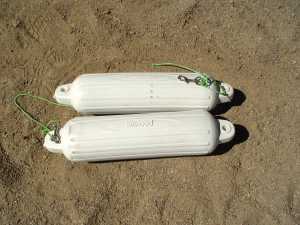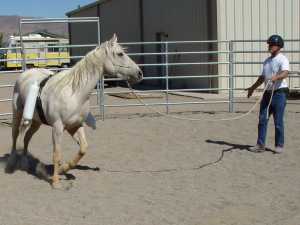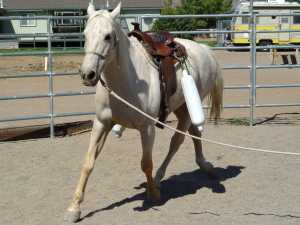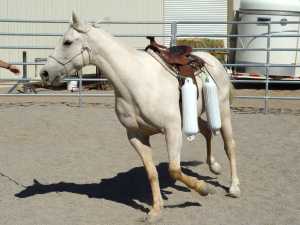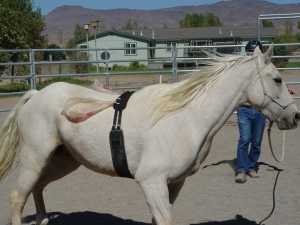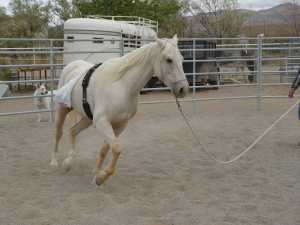Training Horses the "Wal-Mart" Way
|
| This is a continuation of a feature. To understand the context and application of the suggestions presented, please be sure to read Part One. |
|
Training with Boat Bumpers
Our objective is whenever possible to make the training process safe for both horse and trainer. As long as we can control the stress and challenges facing the horse, we can help the horse respond more predictably and make the training process easier on the animal. Some horses that are just being started have a hard time with both the visual stimulus and contact (feel) of the rider's legs on their sides. This stress tends to inhibit their response to rein cues and can lead to runaways or bucking. We prefer to work out these issues before mounting up. Tony found an ideal tool in Wal-Mart's Sporting Goods Department. They sell neoprene boat bumpers in various sizes that do a great job simulating riders' legs. We merely need to add some string and spring loaded clips (found in the Hardware Dept.) We usually start out by attaching them to longeing circingles and then to the riggings of saddles. The horse can then work out any issues with the bouncing bumpers while on the longe line. For a complete discussion on using boat bumpers, please click Here. |
Attwood boat bumpers
|
Feels like legs!
|
We can even "double up"
|
|
Back to the grocery bags
Horses need to get used to fluttering sounds coming from the rider's area. We like to use plastic grocery bags for this purpose. We start out simple, tying a couple of empty bags to various points on the circingle or saddle. Then we put the horse through his paces. The bags will flutter and balloon as the horse is asked to pick up speed. Once the horse is sufficiently calm with the empty bags, we fill them with things that will rustle and make noise. Empty Sam's Choice beverage cans (or their equivalent) work quite fine. Then later we may even drop a small stone in each can to increase the movement and noise coming from the bags, changing the position of the bags as the horse gets used to the exercise.
Continue to Part FourReturn to Part Two |
Running with empty bags
|
|
Important Note: If you take on the project of developing an untrained horse, everybody will want to give you advice. Don't act on any advice, including the ideas offered in this site, unless it makes sense to you and fits your individual situation. Your abilities and the sensitivities of your horse(s) may differ from the examples given. Be alert and rational with your actions so neither you nor your horse will get hurt. This information is offered as illustrations of what we do and the reader must apply common sense since he or she is solely responsible for his or her actions. Happy trails! Press "Back" to return to the page that brought you hereGo to Case Study SectionReturn to Training SectionReturn to Wild Horse MentorsReturn to KBR World of Wild Horses and BurrosGo To
|

